

|
Home Updates Hydros Cars Engines Contacts Links Who's who index |
Empty Spaces In the Lake
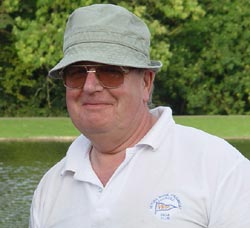 |
Terry W Everitt 1943-2013 We have only known Terry Everitt for a relatively short while, yet within those few years we have come to appreciate just how deep his involvement was in the world of tethered hydroplanes and on so many levels. From the day he was old enough to get into the water in the early 1950s until ill health curtailed his racing nearly 60 years later Terry was at the forefront of competition, and by his own admission, totally dedicated to going as fast as possible. In an interview with OTW in 2007 he said he started in hydro’s because (he) ‘wanted to compete with his dad’.
|
|
Terry’s father William (Bill) Everitt a butcher by trade was also a very good, self-taught engineer. He started racing in Enfield and later joined the Victoria Park Club, of which he was chairman for many years. He competed around England and on the Continent. In the 10cc class, he used a Dooling 61 and in the ‘A’ class a home built engine that was very successful, and held various distance records. In 1952 at St Albans he won the Ford and the Hispano-Suiza cups, running ‘Nan’ and ‘Nan 2’ in the restricted class, receiving his trophies from Gems Suzor. Terry initially helped his dad but was soon competing in his own right, concentrating on the 10cc class for much of his career, telling us that ‘It’s the most competitive class- in my opinion. It’s the formula I of model boat racing’. He soon made his mark, using ‘Nan’ and was winning C class races at MPBA regattas within a couple of years, beating his dad, Ken Hyder and Dickie Phillips in the process. |
|
In 1964 Terry, along with his dad Bill and Ted Blacknell made the first of his many visits to France to race at Amiens. The regatta was not a great success for any of them and made all the more poignant as Bill Everitt died only a few months later at just 56 years old. Twin brother Colin then became a vital part of the team assisting Terry for many years, as well as running boats up to a couple of years ago.
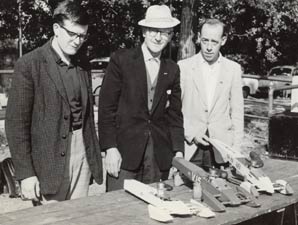 |
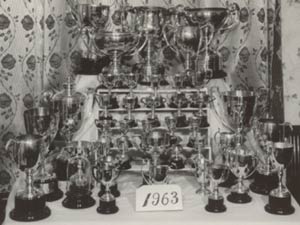 |
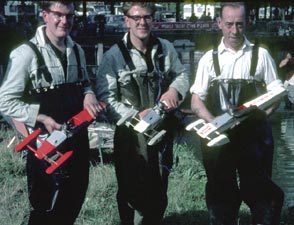 |
Having some experience of the boats being used by the continentals, it was not long before Terry, and Colin, were coming up with ideas for hulls that would move the class on, a process that he continued with for many years. Terry spent inordinate amounts of time designing, building and developing boats that would give him an edge, soon expanding this to the engines as well. He was always of the opinion that he could produce a better motor and was planning a Picco beater for much of the time he was unwell and not able to get into his workshop.
|
|
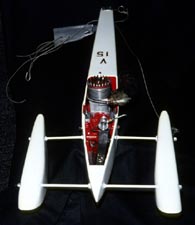 |
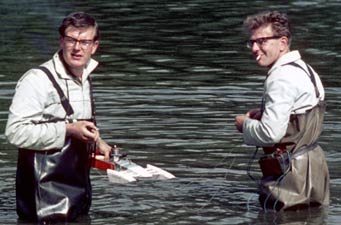 |
Terry was a consummate and enthusiastic engineer who started his working life with an apprenticeship in Mechanical Engineering. He worked for Manifold Machinery Ltd, which was a subsidiary of Thorn Electrical Industries Ltd, - the biggest company in Enfield, whose main production was the manufacture of lamps and televisions, this was as well as day-release to college. At the age of 26 he moved to CEGB Scientific Services, as a Lab Technician. When the electricity supply industry was denationalised Terry transferred to Magnox Electric in their Remote Operations Department as a Build and Development Engineer, until he retired.
His earliest engines were replacements for the ubiquitous McCoy 60s that were the standard wear in the CR class, with the first completed around 1965. The 10cc record breaking motor followed this. The reasoning behind it was simple in that the Italian OPS motor with its Zimmerman disc valve had the exhaust facing the wrong way, so rather than a convoluted tuned pipe with a U bend, he designed a motor with separate front and rear housings so that the exhaust could come out over the flywheel. Turning round commercial front induction motors was also a speciality for Terry and he continued to follow this route, especially with his A2 motors. As well as the 10cc engines he built, a number of 30cc A class motors came out of the workshop, all displaying several elements of lateral thinking in their design. Terry made all his own patterns, while brother Colin was always on hand to assist when the casting process was underway, although Colin told us recently that he was more involved with the building of the hulls.
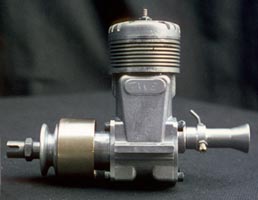 |
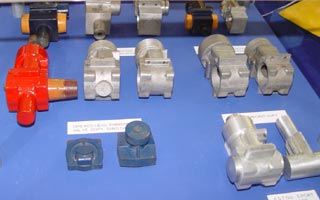 |
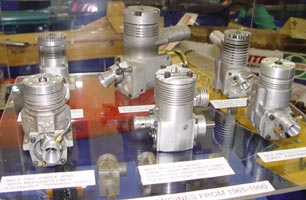 |
| TWE 10cc | Patterns and castings | Engines from 1965-1990 |
|
As speeds increased, keeping the boats on the water became more and more of a problem. At first the changes were more subtle, but soon Terry was coming up with all sorts of ideas to overcome this. The hulls became slimmer and longer with the motors being moved further forward, such as the boat below right with the motor mounted virtually in the bow, vestigial sponsons and a spoiler across them. The most remarkable were the ‘Bat boat’ series with shark like 'mandible' sponsons. Right. Terry with the 'Bat boat' |
|
By all accounts Terry was the first person in this country to seriously address the effect of aerodynamics on tethered hydroplanes as the boat he used at the 1975 World Championships at Welywn, ‘Inter Min’, (below left) demonstrates. We also believe he was the first person to use a rear spoiler, which became standard on all boats, although these were initially little more than tiny aluminium plates. Later his boats would become more conventional, but with little tweaks and design features that were very much his own.
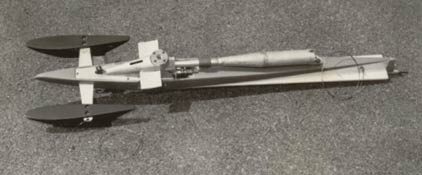 |
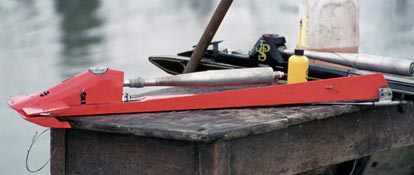 |
Developing engines is always a time consuming process if it has to be done at regattas and unless you have access to a dynamometer or water brake and very understanding neighbours can be very frustrating as so many other factors come into play once the motor is in a hull. In order to test his 30cc motor, Terry mounted it along with a complete hydro drive train on a baulk of timber to run up in the garden. With no load, this must have been an impressive, if not frightening experience, which Colin confirmed to us.
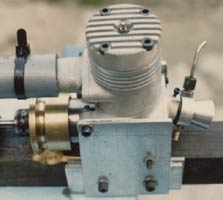 |
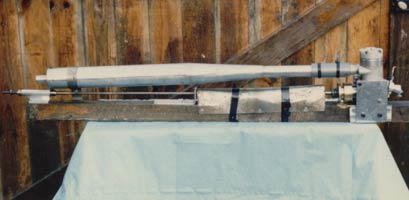 |
 |
Several of Terry’s contemporaries share his view that each run should be a potential record, and throughout his career this was certainly his aim, claiming that breaking records ‘gave him the most satisfaction’. He first achieved this as far back as 1963, breaking Ken Hyder’s record with a run at 81.1mph using a McCoy 60, coincidently the last time the American motor would hold a British record. Terry held this record for five years until the arrival of the Italian motors that would dominate for the next 40 plus years.
Having already produced McCoy style engines from scratch, Terry now set about designing and building a new 10cc motor that incorporated all these latest practices but with the exhaust exiting over the flywheel to give a straight run to the tuned pipe.
|
With the move from loop scavenging to schnuerle porting and side to rear exhaust this involved changing the orientation of all the ports, making patterns, core boxes and then producing castings for the crankcase, front and back plates and the cylinder head. A great deal of time and care is required to machine up all the components of a modern engine to the required degree of accuracy, but this is the type of precision engineering that Terry excels at. |
|
|
At Woburn on the 17th May 1970 this engine broke Stu Robinson’s existing class ‘C’ and outright record at 88.94 mph, so securing Terry Everitt a place in the annals of tethered hydroplane history. Terry remains the only person since 1957 to have broken the outright record with a home built engine although John DeMott came within 2mph of the record in 2000, which by then stood at 135mph, set with an OPS.
|
|
|
|
The 10cc class was always ultra competitive and this record was very short lived, lasting only a matter of weeks, yet despite his constant efforts, Terry would not regain the record for another fifteen years. Now using an OPS, he upped Stu Robinson’s four year old record by 7mph, with the first ever run of over 130mph, which at 131.5mph was also the fastest water screw speed in the world at the time, although he did not claim a world record. This he regarded as ‘his most satisfying run’.
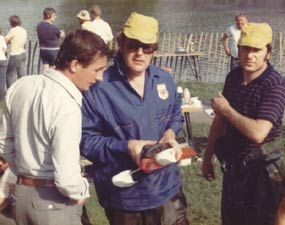 |
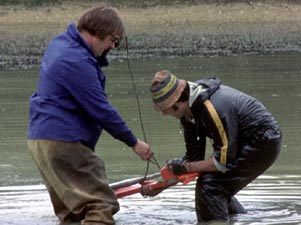 |
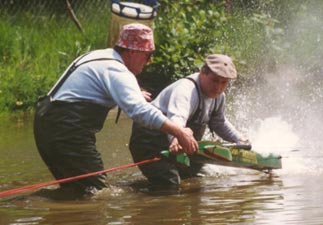 |
| Across the decades with long time friend Ian Berne | ||
As well as a foray into the A class, Terry was a regular competitor in A2 and the new A/B restricted class when that was adopted. With his experience in the 10cc class, the slightly larger motors soon expanded the number of record to his name, with the A/B record he set in the early 1990s not being beaten until a couple of seasons ago. Although his name did not appear in the lists, Terry also had a crucial input into John Hyder’s new 30cc record, as he did with Ian Berne’s A/S, being ‘prop flicker’ on many occasions, a singularly perilous job before the advent of the starting cord.
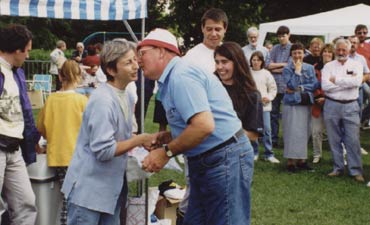 |
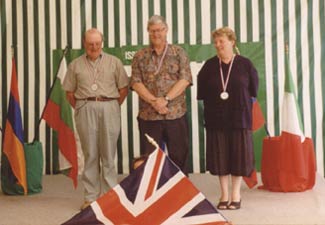 |
| Amiens 1997 | Payre 2004 |
Less well publicised, but possibly of more importance to tethered hydroplane racing has been Terry’s untiring work in organising and administering the sport, while supporting and encouraging the development of venues, clubs and participants. From the moment we set up OTW he assisted us with information and material, passing on anything of interest, and pointing out any factual errors. Terry was also the practical link in getting us both on the water and competing regularly. We all owe so much to Terry and Ann, who supported him at every stage in all he did. From the time that the MPBA disciplines were devolved he served as Chairman of the hydroplane section, a position he also held with the Model Hydroplane Club from its inception some forty years ago.
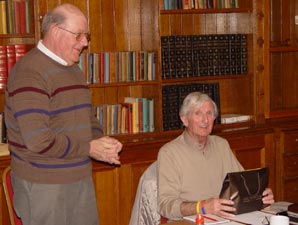 |
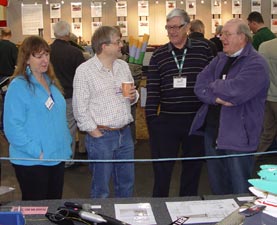 |
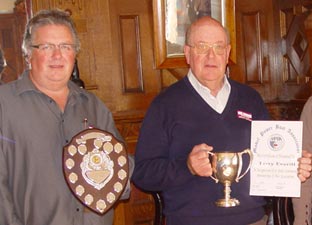 |
| Model Hydroplane Club chairman | Model Engineer Exhibition | Long Service Award and Speed Trophy |
Remarkably, it was not until 2011 that he received his MPBA long service certificate to which he commented ‘about B time too’. Bridle wire, making up tethering lines, machining poles and pole heads, timing gear, supplying drawings, all areas that Terry took on board in addition to his other duties. He could be found at the ME and other exhibitions promoting the sport and supporting those putting the displays together. Recently he and Ann had been arranging the delightful Southern Section lunches, where we could all catch up and anticipate the new season.
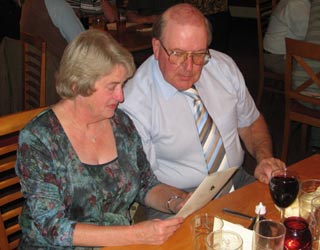 |
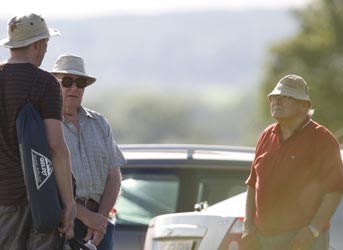 |
| Ann and Terry Centenary Dinner 2008 | The last regatta, Rowden 2012 |
Having raced for something like 57 years in up to three classes at a time and as many as 30 regattas a season, Terry’s total of race wins, is incalculable and many of the perpetual trophies feature his name time and time again. It is probably no exaggeration to conclude that he is the most successful tethered hydroplane competitor of the modern era and certain that his work in support of the sport is beyond comparison. Terry Everitt’s death is an incalculable loss to tethered hydroplane racing and all those that knew him.
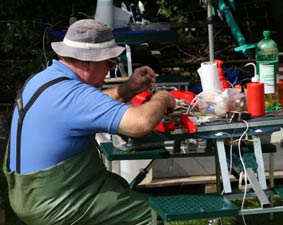 |
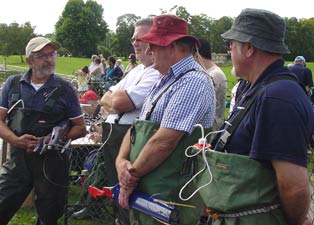 |
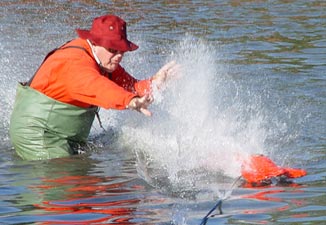 |
Terry remembered by Jim Free
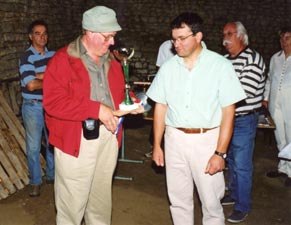 |
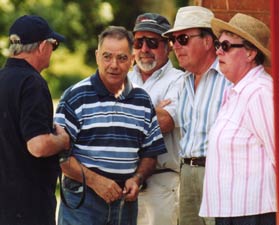 |
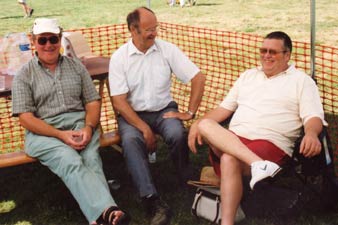 |
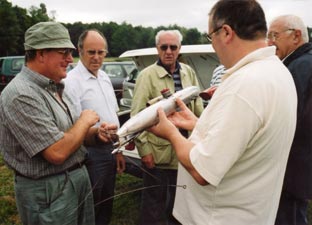 |
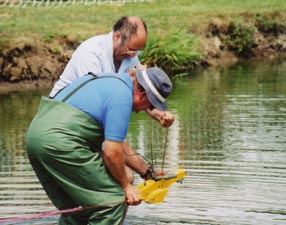 |
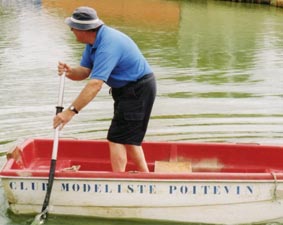 |
|
Thank you to Jim Free, Mick Biddle, Tony and Sonia Collins and the Everitt family for additional photographs |
||
Stuart Robinson: 1936-2025
|
|
Stuart was one of the very few people whose involvement with model sport began with visits to the Eaton Bray Model Sportsdrome in the late 1940s and continued through to 2023 via tethered hydroplane and later tethered cars. His hydroplane racing career started when he bought Dickie Phillips' 10cc Foz but having also been involved with competitive motor sport his aim was always faster, often by obtaining already proven equipment. He broke the British 10cc record on three occasions and was the first British competitor to break the 100mph mark with a 5cc boat. Domestic events covered most of the UK and involved long journeys to the likes of Cerney, Swindon, Birkenhead, Newcastle, Portsmouth, Southampton and Farnborough, but that was common for all competitors of the period. Longholme lake in Bedford was by way of a change, close to where he lived |
 |
 |
 |
| First runs with 'Foz' | Into the 60s, side exhaust A3 | Tuned pipes and the 'bathers' |
|
Stuart soon expanded his travels to World and European Championships that took him to France, Belgium and further afield to East Germany, Bulgaria and Russia when these were still part of the communist block and furthest of all, China. His first appearance on a podium was at the European Championships in 1973 with a bronze medal behind Marinov and Horvath His increasing involvement soon had him taking up positions with the MPBA where he became President and NAVIGA, including having to visit Monaco for the UIM business meetings, where there were stories to tell. Eventually, he along with his wife Heather qualified to be NAVIGA judges, both officiating at numerous Championships until the travel became too onerous. After forty years of the famous swimming trunks being seen at lakes throughout the UK and Europe, Stuart hung up his starting cord in the late 1990s. |
|

End of the hydro era, launching an A3 hydro at Farnborough
It was not however the end of Stuart's involvement with racing as he then turned his attention to tethered cars, joining the newly reformed BTCA as member GB002 and with it, the Europe wide, tethered car community. He began with a 3.5cc 3B from Wilfrid Sott, which in turn spawned two home built versions that brought him some degree of success. He was soon moving up to the 'heavy metal' brigade with a 10cc Denneler from Harald Arlautzki, claiming the British record in the process. Travels with his tethered cars did not take him quite so far afield, although Germany, France and Sweden were regular trips. As an avid collector of tethered cars and engines he would also take a Dooling Arrow to old timer events in Sweden.
 |
 |
 |
| Lyon 2005 | Orebro 2006 | Amiens 2007 |
Having spent all his working life in the garage business, retirement saw him in his workshop almost constantly building and restoring cars and boats that he had gathered during his forays here and abroad. Seeing them all spread out prior to the recent sale was impressive to say the least. His increasingly poor health stopped any active involvement, although he would bring his cars to Buckminster for others to run for him, and was never far away from a swapmeet until the tail end of 2024. We pass on our condolences to Heather and Ian.
©copyrightOTW2025